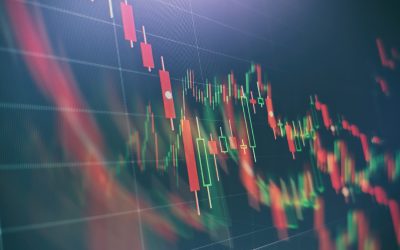
Today, the Forex market stands as the world’s largest financial market, boasting a daily turnover of about $8 trillion. But has it always been this expansive and accessible to virtually everyone? Let’s delve into its development and recent transformations.
Article content
The Forex market, in its modern form, emerged in the 1970s when the United States abandoned the “gold standard”, where the dollar’s value was pegged to the value of gold. This led to the fluctuation of world currencies relative to the dollar, paving the way for a market where currencies are freely traded.
Since then, the Forex market has undergone radical transformations, and it continues to change rapidly. Here’s what influences these changes.
Globalization
The world is becoming increasingly interconnected, with virtually no countries left out of global financial and commodity circulation. Trade routes have become complex and sometimes unclear. As a result, various factors now have a growing mutual influence. In the past, only wars and revolutions could significantly impact a national currency’s value. However, today, events like trade crises in Indonesia can affect the exchange rate of currencies like the Turkish lira.

Technological Advancements
Technological advancements have significantly impacted currency trading, making it more accessible and efficient.
Internet Breakthrough
Before the 1990s, currency trading was limited to a small group of specialists. However, the internet revolutionized currency trading, making it accessible to everyone. The introduction of trading terminals caused a significant increase in the number of Forex participants, resulting in a surge in market turnover from $1 trillion in 1992 to $7.5 trillion in 2024.
New Trading Technologies
The early private terminals for Forex trading were slow and rudimentary. However, with the rapid advancement of internet and computer technology, both novice and experienced traders now have access to a wealth of opportunities. Automated trading software is now widely used worldwide.
Following the introduction of basic technical indicators for identifying potential market directions, more advanced trading robots have emerged. These robots come with refined adjustments, allowing individuals without programming knowledge to engage in uninterrupted automatic trading. Subsequently, the concept of copy trading was introduced, enabling systems to replicate the trades of other traders.
Mobile Trading
The advent of smartphones revolutionized virtually every aspect of our lives, and the Forex market was no exception. Nowadays, it’s common to encounter traders making trades on the beach, in a restaurant, or during their commute to work. More and more individuals opt for mobile devices over computers, exclusively using mobile apps for trading. This trend is unsurprising, as trading via mobile apps enables quicker decision-making and trading from anywhere at any time.
Access to News
Political events and economic decisions have always wielded considerable influence over financial markets. However, in the past, individuals typically received fresh information only once or twice a day. Nowadays, information is constantly updated, with updates occurring literally every minute. Consequently, market volatility has surged, with charts changing direction sharply and frequently throughout the day.
Artificial Intelligence
Publicly accessible AI emerged only 1.5-2 years ago, but it’s evident that they have the potential to revolutionize the financial markets. Every day, these systems enhance their learning capabilities, thereby increasing the likelihood of accurate forecasting. It’s plausible that in the near future, we’ll witness robots capable of analyzing vast arrays of market data spanning many years and crafting highly precise trading strategies.

Expansion of Financial Instruments
However, changes have not only impacted technological advancements but also the expansion of the financial instruments landscape. Nowadays, traders have access to more than just dozens of currency pairs.
The success of Bitcoin has spurred the creation of numerous cryptocurrencies, many of which are accessible through brokers. By trading cryptocurrencies with leverage, traders can potentially earn significantly more than simply buying and selling them outside of Forex trading platforms.
Another relatively new instrument is CFDs, or contracts for difference. These instruments offer Forex traders convenient access to profit from price fluctuations in various assets such as commodities, indices, stocks, and bonds. Furthermore, traders need not purchase the underlying securities themselves, thereby reducing costs. For instance, there’s no need to pay stamp duty.
Conclusions and Trends
The Forex market is highly dynamic, capable of swiftly adapting to new regulations and embracing change. This adaptability is crucial to consider when forecasting future developments.
Traders should particularly focus on emerging technologies like artificial intelligence and machine learning, which are reshaping the landscape of trading. Additionally, we anticipate a continued growth in the number of market participants, driven in part by increased access to trading platforms in developing countries such as India, China, and various nations in Asia and Africa. As a result, the market is poised to become even more liquid, presenting unlimited opportunities for successful trading.






